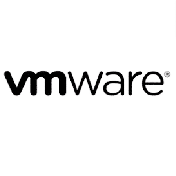Seminarinhalt
In diesem Training besprechen wir die Aufgaben, die zur Erfüllung der Rolle des Entwicklers in Dynamics 365 Finance and Operations Apps erforderlich sind. Der Dynamics 365 Finance and Operations Apps Entwickler ist eine wichtige technische Ressource, die die Anwendung implementiert und erweitert, um die Anforderungen des Unternehmens zu erfüllen.
Programm
Introduction to developing with finance and operations apps
- Explore the ecosystem and main components of finance and operations apps
- Explore the technical architecture of of finance and operations apps
- Explore design and deployment considerations for finance and operations apos
- Manage finance and operations apps implementations by using Lifecycle Services
- Work with performance and monitoring tools in finance and operations apps
- Manage source code b using version control in finance and operations apps
- Explore the test framework and tools in finance and operations apps
- Explore reporting tools in finance and operations apps
- Set up a VHD for finance and operatons apps
- Start developing for finance and operations apps by using Visual Studio
- Get started with development using X++ in finance and operations apps
- Develop object-oriented code in finance and operations apps
- Implement application lifecycle management in finance and operations apps
- Build extended data types and enumerations for finance and operations apps
- Build data models in finance and operations apps
- Build forms and optimize form performance in finance and operations apps
- Create classes in finance and operations apps
- Build reports for finance and operations apps
- Build workspaces in finance and operations apps
- Implement role-based security in finance and operations apps
- Apply basic performance optimization in finance and operations apps
- Explore extensions and the extension framework in finance and operations apps
- Extend elements in finance and operations apps
- Consume business events in finance and operations apps
- Explore data integration concepts in finace and operations apps
- Work with synchronous integrations in finance and operations apps
- Implement the Data management package API for finance and operations apps
- Work with asynchronous integrations in finance and operations apps
- Prepare data for migration to finance and operations apps
- Manage data sources with external data stores in finance and operations apps
- Integrate finance and operations apps with Microsoft Azure
- Connect to Microsoft Power Platform services with finance and operations apps
- Prepare data for migration to finance and operations apps
- Work with data management in finance and operations apps
- Perform user acceptance testing in finance and operations apps
- Prepare to go-live with finance and operations apps
- Work with analytics and reporting in finance and operations apps
- Confiure electronic reporting in Dynamics 365 Finance
- Work with analytics and reporting in finance and operations apps
- Configure electronic reporting in Dynamics 365 Finance
Zielgruppen
Microsoft Dynamics 365 Finanz- und Betriebs-Apps-Entwickler


